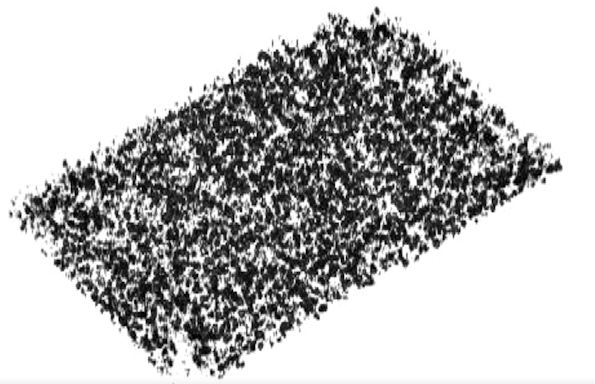Research finds new use for medical imaging technique in automotive industry
Published on

A study by researchers at the University of Liverpool has demonstrated, for the first time through OCT and image analysis approach, the ability to quantitatively and automatically measure the size, number and orientation of metal flakes in industrially applied car paint
Many of today’s cars are coated with paint that exhibits a metallic or glittery shine. The exact sparkle and color you see is determined by the distribution and characteristics of tiny metal flakes used in the paint.
Researchers have demonstrated a new approach to analyse the metal flakes based on the medical imaging technique optical coherence tomography (OCT). This approach provides the car industry with a practical way to automatically analyze these metal flakes, which until now have been difficult to image, in order to improve the efficiency of the automotive finishing process.
Professor Yaochun Shen, from the University's Department of Electrical Engineering & Electronics, said: “This approach could be very useful for quality assurance processes used during car manufacturing.
“The painting step is a bottleneck in the manufacturing process. If the finished car paint does not meet requirements, then it must be removed chemically and the car completely repainted. This not only costs time and money but also creates chemical waste and associated environmental issues.”
“Using this technique for monitoring in-line processes could also help automotive manufacturers better understand the whole coating process. With that better understanding, the car industry may be able to develop new coating processes or new types of coating.”
OCT is a light-based technique that acquires real-time cross-sectional images with micron-scale resolution. Since its invention in 1991, medical applications of OCT have quickly expanded, and today doctors routinely use it to diagnose eye diseases. Because of the technology’s capabilities and inherent practicality, OCT continues to move into new biomedical applications and is now being explored as a tool for improving manufacturing and industrial processes.
The research, published in the journal of the Optical Society, Optics Express, shows that their method can automatically identify and perform 3D measurements of metal flakes that are just 10- microns in diameter and 1-micron thick.
Professor Shen added: “When the car manufacturer approached us to develop a new technique for analyzing the glittery flakes in car paint, we felt OCT could provide a solution. We use OCT in our ophthalmologic research because of the high resolution and because it can perform measurements without touching the sample. This combination makes it ideal for the analysis the automobile manufacturers needed with production.”
To image the flakes, the researchers designed a 3D OCT instrument with very high lateral spatial resolution to distinguish miniscule flakes and a high depth resolution to see the position and orientation of each one. Because a single 3D OCT image contains thousands of flakes — too many to be measured manually — the researchers also developed an algorithm to automatically identify and describe each flake in a sample.
The research team is also working to apply OCT in other industrial contexts, such as analyzing coatings of pharmaceutical tablets. The quality of these coatings controls drug release rates and OCT could help quantitatively analyze the thickness uniformity of these coatings and check for defects.
Professor Shen said: “Our research with car paint and with pharmaceutical coatings shows that OCT, which has been used for some time for medical applications, can also be used for industrial applications.”
The paper `Non-destructive Analysis of Flake Properties in Automotive Paints with Full-field Optical Coherence Tomography and 3D Segmentation' is published in Optical Express (DOI: https://doi.org/10.1364/OE.25.018614)